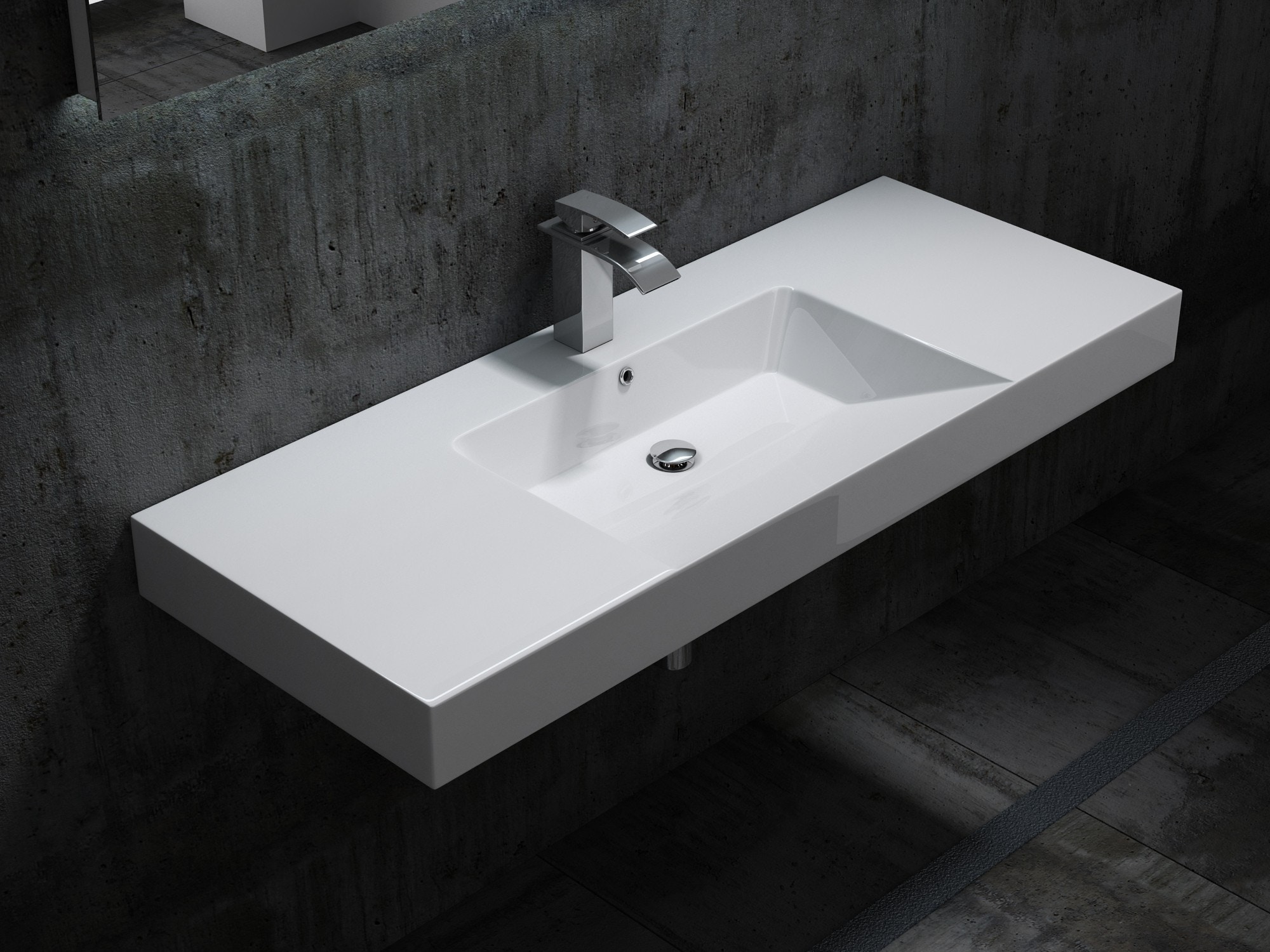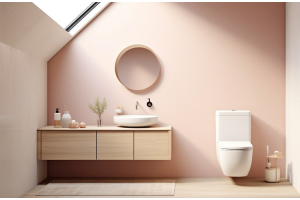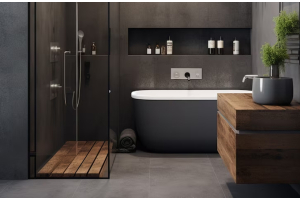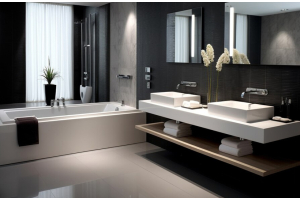
Bathroom basins, also known as sinks, are one of the most essential pieces of equipment in a bathroom. Whether you are remodeling an existing bathroom or planning a new one, it is important to understand the different types of bathroom basins available. In this blog post, we will provide an overview of the different types of bathroom basins and offer some helpful tips for selecting the best option for your needs. Read on for our beginner's guide to bathroom basins!
The Different Types of Bathroom Basins
There are a number of different types of bathroom basins available, each with its own set of features and design options. When selecting a basin for your bathroom, it’s important to consider your needs and the aesthetic you’d like to create.
Wall Hung Basins: Wall hung basins are mounted directly onto the wall, allowing them to be placed in areas that traditional floor-mounted basins can’t reach. This type of basin is great for small bathrooms, as it will give the illusion of a larger space.
Pedestal Basins: Pedestal basins are typically made from ceramic or porcelain and are designed to be mounted onto a pedestal stand. This type of basin is perfect for creating a classic, traditional look in your bathroom.
Countertop Basins: Countertop basins, also known as vessel basins, are designed to be mounted onto a countertop. These basins are often made from materials such as glass, stone, or ceramic and come in a variety of shapes and sizes.
Undermount Basins: Undermount basins are designed to be installed under a solid surface, such as a countertop or worktop. This type of basin is ideal for creating a seamless look in your bathroom.
Cloakroom Basins: Cloakroom basins are usually smaller than regular bathroom basins and are designed to fit into tight spaces, such as an alcove or corner. This type of basin is perfect for smaller bathrooms or cloakrooms.
Bowl Basins: Bowl basins are designed to be placed on top of a countertop or vanity unit and feature an exposed bowl design. This type of basin is perfect for creating a modern, minimalistic look in your bathroom.
Material Options for Your Basin
When selecting a bathroom basin, one of the most important considerations is the material it’s made from. Your choice of material will impact the look and feel of your basin, as well as how durable and easy to maintain it is. Here are some popular materials to consider for your bathroom basin:
- Ceramic: This classic material is both attractive and hard-wearing. Ceramic basins come in many different shapes and sizes, making them perfect for any bathroom style. They’re also relatively easy to keep clean.
- Porcelain: Like ceramic, porcelain is a very popular choice for bathroom basins. It’s highly durable and comes in a range of finishes. Porcelain is resistant to scratches and chips, so it’s perfect for busy bathrooms.
- Glass: For a modern, luxurious look, glass basins are a great option. These sleek basins come in a range of styles and colours, making them easy to match with existing décor. However, glass is more delicate than other materials and can be prone to cracking if not handled with care.
- Stone: Natural stone basins are an increasingly popular choice for bathrooms. The combination of natural beauty and durability makes stone a great option for busy households. Popular choices include granite, marble and quartz.
- Wood: Wooden basins are perfect for adding a rustic touch to your bathroom. Wood is naturally resistant to water damage and staining, making it perfect for wet areas. However, wood will need to be properly sealed and treated with care to ensure it lasts.
No matter what material you choose for your bathroom basin, make sure it fits in with the overall style of your bathroom and suits your needs.
Size and Shape Considerations
When it comes to picking out the perfect basin for your bathroom, size and shape are two of the most important considerations. There are several different types of basins to choose from, and each has its own unique size and shape.
The two main categories of basins are pedestal and wall mounted. Pedestal basins typically come in round or oval shapes and can range from small to large in size. Wall-mounted basins are typically square or rectangular and can also range from small to large in size. Additionally, there are semi-recessed basins which offer a blend of both pedestal and wall-mounted designs.
When selecting a basin, consider the dimensions of your bathroom space to ensure you get a basin that fits perfectly in your space. The size and shape of the basin should be proportionate to the size of the room and complement the other fixtures in the room such as the toilet and shower. Keep in mind that round or oval basins are best suited for smaller bathrooms, while larger bathrooms can accommodate more rectangular and square shapes.
Lastly, take into consideration how you want the basin to look. Certain shapes and sizes can give off different vibes, so think about what style best matches your taste. With all these options to consider, you'll be sure to find the perfect basin for your bathroom!
Faucet Mounting Styles
When it comes to faucet mounting styles, there are several different options. The most common types of faucet mounting styles include deck-mount, wall-mount, and vessel-mount.
Deck-Mount: The most popular style is the deck-mount. This type of faucet is installed onto the countertop or sink. It is a great option for those who have limited space in the bathroom, as it can fit in tight spaces.
Wall-Mount: Wall-mount faucets are a great choice for those with a more traditional style. They are mounted on the wall above the basin and require a plumbing access point behind the wall. They offer plenty of clearance for cleaning around the sink and provide a more elegant look.
Vessel-Mount: Vessel-mount faucets are typically used for vessel-style basins, but can also be used for other types of basins. This type of faucet is mounted directly onto the basin. It offers plenty of clearance around the sink and can give your bathroom a modern, contemporary look.
No matter what type of faucet you choose, it is important to make sure it is compatible with your basin. Be sure to ask your plumber or supplier for help if you have any questions.
Drainage Systems
Drainage systems play an important role in how a bathroom basin functions. The most common system is a standard sink drain, which is connected to the pipe underneath the sink and connects directly to the house's plumbing system. There are also special drainage systems that can be used for certain types of basins. These include wall-mounted drains, where the drain connects to the side of the basin, and vessel drains, which connect directly to the bottom of the basin. Some basins are even designed with built-in drainage systems, such as pedestal basins or basins with overflow systems. In any case, it is important to choose a drainage system that is compatible with the basin you choose, as well as any other fixtures in your bathroom.
Installing Your Basin
When it comes time to install your bathroom basin, it's important to make sure you have the right tools and know-how to get the job done correctly. Depending on what type of basin you have chosen, the installation process may vary. Here are a few tips to help you install your new basin safely and effectively:
1. Prepare the area by removing any existing fixtures or fittings, and be sure to turn off the water supply before you begin.
2. For basins that require an extra mounting frame, attach it to the wall before installing the basin itself.
3. Place the basin onto the mounting frame and secure it with appropriate screws and fixtures.
4. Connect the water supply to the basin and check for any leaks or issues.
5. Connect the drainage system and check for any potential issues with water draining properly.
6. Finally, connect any additional fixtures such as the faucet and soap dish, ensuring all fixtures are securely attached and sealed correctly.
With these steps, you should now have your basin installed correctly and safely. If you have any doubts or uncertainties, it's always best to consult with a professional plumber to ensure your basin is installed correctly and safely.




